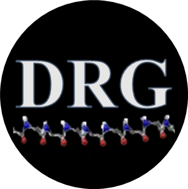
Valerie Daggett
Professor of Bioengineering
Adjunct Professor of Biochemistry
Adjunct Professor of Chemical Engineering
Adjunct Professor of Biomedical and Health Informatics
Member of Neuroscience Program
Member of Biological Physics, Structure and Design Program
B.A., 1983, Reed College
Ph.D., 1985-1990, University of California, San Francisco
Postdoctoral Fellow, 1990-1993, Stanford University
Our group is currently focused on protein unfolding and disease where we combine both computational and experimental approaches. Prior to 2007 we were primarily a computational lab focusing on developing methods and software for the realistic simulation of proteins. We performed the first simulations of protein unfolding, made predictions and validated those predictions in a long-standing collaboration with Alan Fersht. Along the way we branched out to simulate representatives of all known protein folds, an effort we call Dynameomics. This led to the largest collection of simulations and protein structures in the world. We also have been consistently pursuing simulations of protein unfolding related to amyloidogenesis. We found that amyloidogenic peptides and proteins under amyloidogenic conditions changed structure and formed a novel, nonstandard secondary structure, which we dubbed alpha-sheet. We have a wealth of controls from our Dynameomics project and those native proteins do not form alpha-sheet. We proposed that alpha-sheet structure is linked to toxicity during amyloidogenesis and in particular is populated by soluble toxic oligomers. We then set out to design stable alpha-sheet hairpins to ensure that our discovery of alpha-sheet was not just a computer artifact. At this point we moved to the Bioengineering Department in 2007 and set up a wet lab to test the implications of our alpha-sheet hypothesis. We designed stable alpha-sheet hairpins in silico and chemically synthesized and characterized the best scoring designs as well as conformational controls. In the intervening years we have developed an alpha-sheet library and tested our designs in a variety of mammalian amyloid disease systems and in bacteria that use amyloid fibrils for biofilm stability to evade the host immune response and antibiotics. Our compounds inhibit aggregation and toxicity and do so by binding the toxic oligomers that form en route to mature amyloid. These compounds work in the 9 disease systems we have explored thus far, and we have moved into animal studies.

 Curriculum Vitae
Curriculum Vitae